How to Demonstrate So Children Can Imitate – Teaching Handwriting

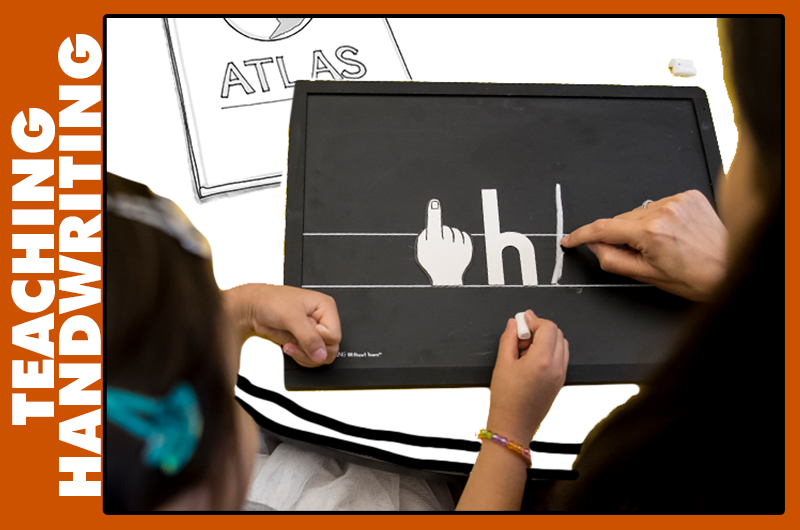
Remember playing Follow the Leader?
The Leader showed how to do something while the Follower imitated…what fun! Imitation is a developmental learning tool used to teach and show children how something is done. It’s one of the first learning tools babies use.
It’s amazing how a newborn can imitate facial expressions and toddlers love to mimic adult behaviors like cleaning the house. It comes naturally to them. That’s how they learn, that’s how we all learn! Learning through imitation and observation is recognized as a primary tool of learning in child development.
I’m going to share with you my 4 best tips on how to demonstrate (or model) handwriting so your children can observe and imitate.
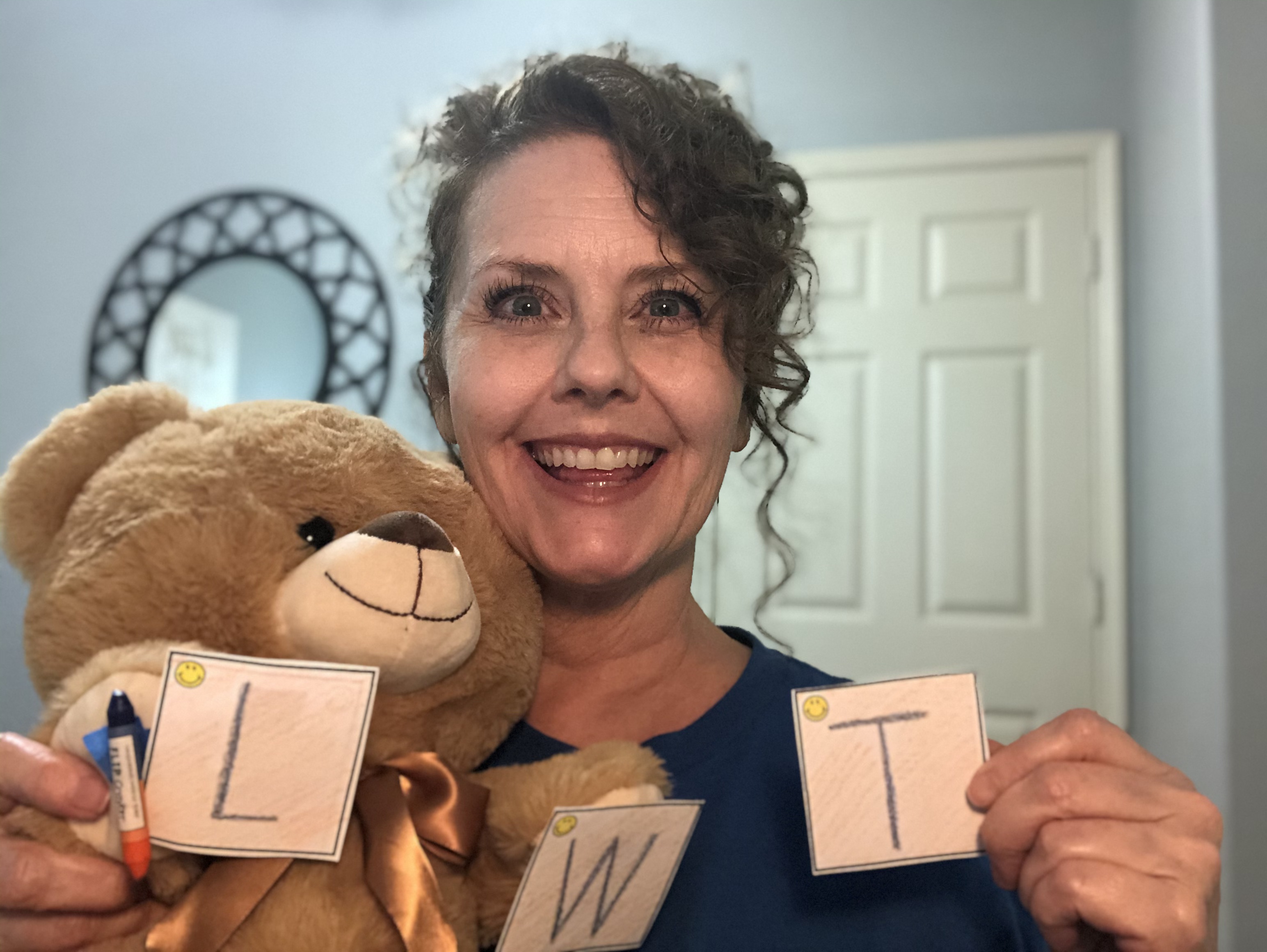
I don’t have any kids at home anymore, so I’m going to use “Teddy” as my child/student to illustrate some of these tips and strategies. And in case you’re wondering, your kids don’t need to sit in your lap or on top of the desk like Teddy does (LOL).
- Show children how to draw shapes, write letters/numbers, form or connect letters in cursive, but make sure they can SEE what you are showing them.
If you are showing them how with your right hand, don’t have them sit on your right side. Have them sit on your left. If they sit on your right side, your arm or hand will block their view. They need a clear view to see exactly how it’s done, so they can imitate what they see.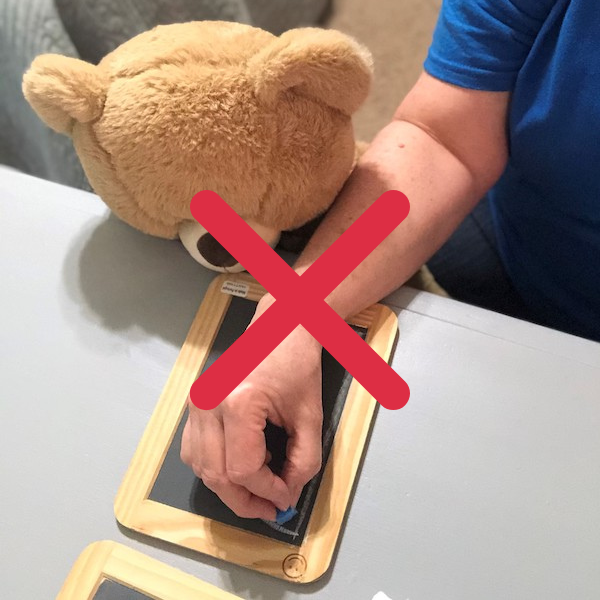
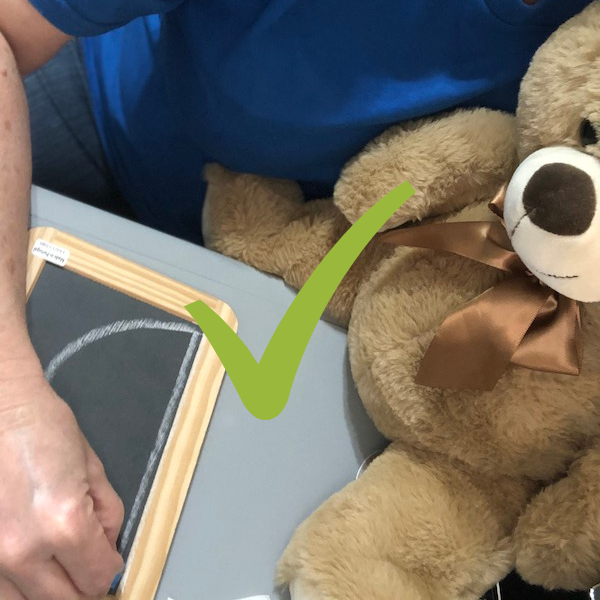
- Position your demonstration appropriately for their age.
Young children (Pre-K to kindergarten) imitate best when the model/demonstration is above the space where they will imitate. They still need to SEE, so watch where they are sitting. Don’t block their view with your arm or hand.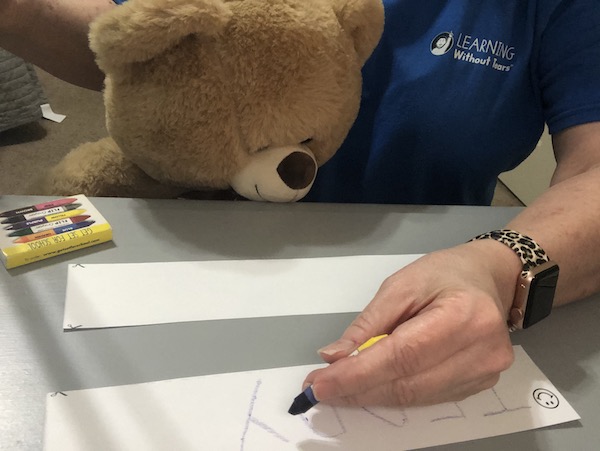
Children in first grade and above can imitate when the model/demonstration is beside the space where they will imitate (most kindergartners can do this around midyear).
- Hold your pencil/crayon/marker away from the tip.
If you hold it too close to the tip, your hand will cover most of your demonstration. They won’t be able to SEE. Instead, back your grip away from the tip. This allows children to see the movement of your writing tool and learn how to imitate the movements correctly.
Top Tip: Check out this fun video for a simple method to show children how to hold the pencil correctly. It’s a great demonstration!
- Use the strategy “My Turn, Your Turn” to make sure they are watching.
When you are showing them how to write, start by saying, “It’s my turn, watch." When you are ready for them to imitate say, “It’s your turn, show me." When your child understands this process, you can shorten the phrases to “My Turn, Your Turn” and they will know exactly what to do.
Teaching handwriting can be fun and easy if you remember to “Follow the Leader,” and always make sure the Leader can be seen. Have fun!


